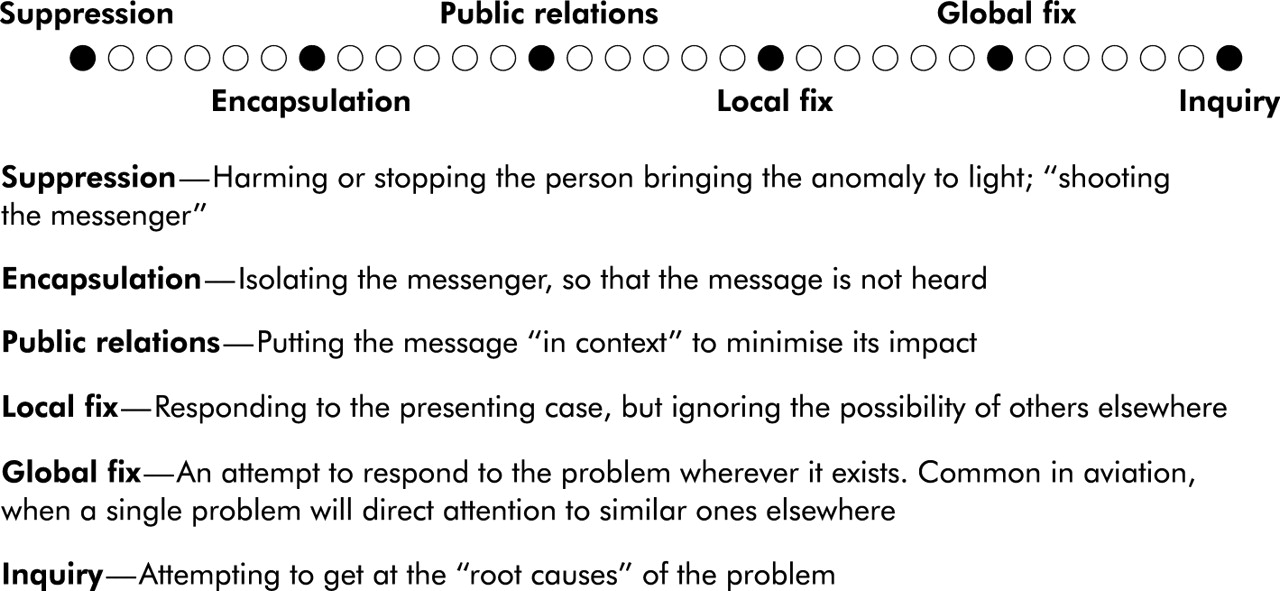Pharmacy Error Reporting
Error reporting in pharmacy is traditionally performed using paper records, click the link to see a dispensing error record form template. The most common form of error in a pharmacy is a dispensing error, this is defined as a discrepancy between a prescription and the medicine that the pharmacy delivers to the patient or distributes to the ward on the basis of this prescription, including the dispensing of a medicine with inferior pharmaceutical or informational quality1.
The person who identifies the error is usually the on-duty pharmacist as they perform the "final check" of the medicine, however, in some cases, this may be an accredited checking technician or pharmacy assistant. This is where the first issues in error reporting arise, how is this error caught? What then happens? Is it suppressed? Is it encapsulated?2

Figure 1. Issues in Pharmacy Error Reporting.
Once the error has been identified, it is flagged to the person who made the error, the incident is hopefully corrected and sometimes recorded. Types of error in pharmacy include:
- Prescribing faults
- Prescription error
- Transcription errors
- Dispensing errors
- Administration errors,
- ‘across settings’ errors
Within these types of error, each can be subdivided into individual error event types:
- Dispensing medicine for the wrong patient (or for the wrong ward)
- Dispensing the wrong medicine, dosage, form, strength, quantity
- Dispensing at the wrong time
- Dispensing an expired or almost expired medicine
- Omission (i.e. failure to dispense)
- Dispensing a medicine of inferior quality (pharmaceutical companies)
- Dispensing an incorrectly compounded medicine (compounding in pharmacy)
- Dispensing with the wrong information on the label
- Incorrect pharmacy address
- Dispensing with the wrong verbal information to the patient or representative
Digital Pharmacy Error Reporting
Human error can never be eliminated, however with digital systems in place we believe we can drastically reduce clinical errors. The hubnet.io contains a powerful Clinical Error Reporting function which allows the pharmacy multidisciplinary team to report errors centrally to a remote Superintendent and then submit them to (National Reporting and Learning System) NRLS a requirement of the Community Pharmacy NHS Contract.
The system does this by registering the whole pharmacy team into their various locations and then gives each staff member a login to their own personal account on the hubnet.io.
Once inside on the left-hand side, they will see "Clinical Log" this is where they can view other errors which have occurred within the pharmacy and associated learning and also enter their own error so others can see.
The Story.
Mike previously recorded clinical errors in a little notebook. The book was often difficult to find so the pharmacy staff often would forget to enter the errors. This was a missed opportunity for not only errors to be noted but patterns in the errors to be analysed. With the new system, everyone can centrally record the errors even on their phone. Mike can then see every error performed by each member in every location and look for patterns such as printing error, bagging errors or just one person who makes the most errors. Once found Mike then uses the revalidation tracker to add an Error Reduction course to the staff members account so that his Superintendent due diligence has been performed.
References
1 Medication errors: the importance of safe dispensing: Ka-Chun Cheung, Marcel L Bouvy, and Peter A G M De Smet. Published: Jun 2009. Accessed Jul 2019.
2 A typology of organisational cultures, BMJ Quality & Safety 2004;13:ii22-ii27. First published December 2, 2004. http://dx.doi.org/10.1136/qshc.2003.009522
Hubnet is an online pharmacy information system. We intend to provide healthcare professionals with an online ecosystem to allow for better communication between each other and their patients. Protected by law, the data you enter into this site remains your intellectual property and cannot be used by us. Our goal is to enable you to do more, if you like it you can subscribe for more!
